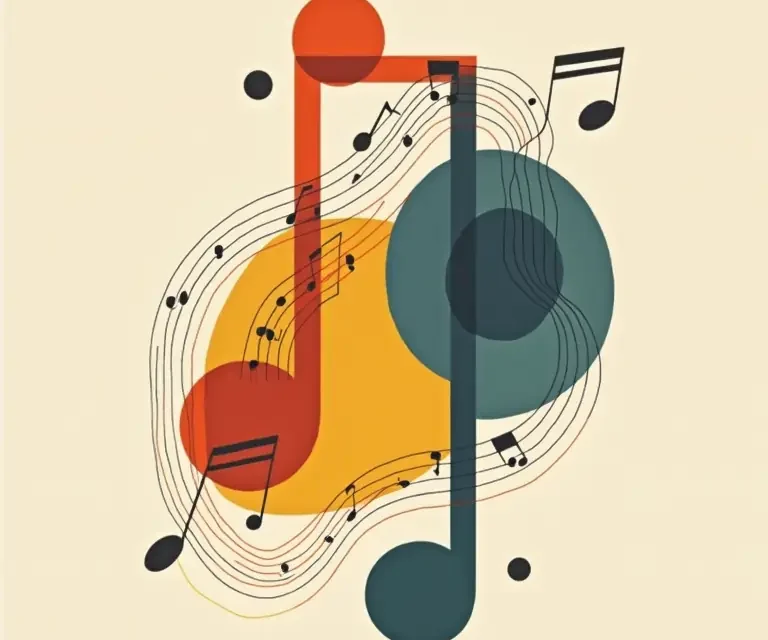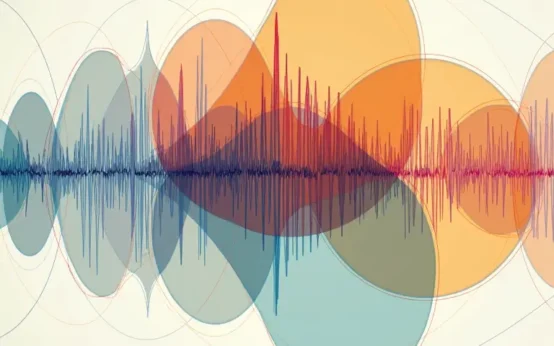Folk music, in its myriad forms across the globe, often feels deeply rooted in tradition, a product of generations passing down melodies and rhythms. But beneath the apparent diversity lies a remarkable consistency – particularly when we examine the scales used to construct these melodies. While the specific scales vary, the *principles* governing their formation, and the patterns they exhibit, are surprisingly universal. This article will delve into these patterns, exploring how cultural influences, historical constraints, and even potentially, the physics of sound, have shaped the scales that form the bedrock of traditional folk music worldwide.
What is a Scale, and Why Does it Matter?
Before we dive into the specifics, let’s define what we mean by “scale.” In music, a scale is a set of notes arranged in ascending or descending order. These notes aren’t chosen randomly; they’re related by specific intervals, creating a characteristic sound. The scale dictates the harmonic possibilities of a piece of music – the chords that will sound pleasing, the melodic contours that will feel natural, and the overall emotional tone. Think of a scale as the painter’s palette; it limits the colors available, but within those limits, allows for an infinite range of expression.
Understanding scales is crucial because it unlocks a deeper appreciation of folk music. It reveals why certain melodies sound “right” and others don’t, and why certain musical traditions have a distinct character. It also highlights the ingenuity of folk musicians, who often created sophisticated musical systems with limited theoretical knowledge, relying instead on ear training and cultural transmission.
The Pentatonic Scale: A Global Phenomenon
Perhaps the most ubiquitous scale in folk music is the pentatonic scale – a five-note scale. It appears in the music of Africa, Asia, North and South America, and even parts of Europe. This isn’t a coincidence. The pentatonic scale’s prevalence likely stems from several factors, including its simplicity and its inherent consonance. It’s remarkably difficult to create a truly dissonant melody using only the notes of a pentatonic scale.
There are different varieties of pentatonic scales, but two are particularly common: the major pentatonic and the minor pentatonic. The major pentatonic (e.g., C-D-E-G-A) has a bright, uplifting quality, while the minor pentatonic (e.g., A-C-D-E-G) sounds more melancholic or introspective. Variations can be achieved by altering which notes are omitted from a seven-note (diatonic) scale. For example, removing the 4th and 7th degrees of a major scale creates a major pentatonic.
The pentatonic scale’s adaptability also contributes to its widespread use. It can be easily transposed to different keys, and it lends itself well to improvisation. Many traditional instruments, such as the Chinese guzheng and the Japanese koto, are inherently suited to playing pentatonic melodies. It’s also found in blues music, demonstrating its continued relevance even in modern genres.
Beyond Pentatonic: Diatonic Scales and Modal Variations
While the pentatonic scale dominates in many traditions, many other folk musics utilize diatonic scales – scales with seven notes. The most familiar diatonic scale is the major scale (e.g., C-D-E-F-G-A-B), which forms the basis of much Western music. However, folk music often employs *modes*, which are variations of the diatonic scale, each with a distinct character. These modes were explored extensively in medieval music and remain important in understanding many folk traditions.
Think of the major scale as a parent scale, and the modes as its children. Each mode starts on a different degree of the major scale, creating a unique melodic flavor. For example:
- Dorian: Starting on the 2nd degree (e.g., D-E-F-G-A-B-C) – often sounds melancholic and folk-like.
- Phrygian: Starting on the 3rd degree (e.g., E-F-G-A-B-C-D) – often evokes a Spanish or Middle Eastern feel.
- Lydian: Starting on the 4th degree (e.g., F-G-A-B-C-D-E) – has a bright, ethereal quality.
- Mixolydian: Starting on the 5th degree (e.g., G-A-B-C-D-E-F) – often used in blues and rock music.
Many European folk traditions, for example, heavily utilize Dorian and Mixolydian modes, giving their music a characteristic sound distinct from the more common major and minor scales. Understanding these modal variations is crucial to appreciating the nuances of different folk styles.
The Influence of Harmonic Practices
The scales used in folk music aren’t just about melody; they’re also intertwined with harmonic practices. The chords that are considered consonant (pleasing) within a particular tradition are often directly derived from the scale. In pentatonic music, for instance, simple triads (three-note chords) built on the scale degrees are common. In modal music, the characteristic chords reflect the modal flavor – Dorian often features minor chords with added 6ths, while Lydian often uses chords with augmented 4ths.
The relationship between scale and harmony is often reciprocal. A scale might be favored because it supports a particular harmonic style, and the harmonic style might, in turn, reinforce the use of that scale. This interplay creates a cohesive musical system.
Microtonal Scales and Non-Western Traditions
While pentatonic and diatonic scales are prevalent, it’s important to acknowledge the existence of microtonal scales in many non-Western traditions. Microtonal scales use intervals smaller than a semitone (the smallest interval in Western music), creating a more nuanced and complex sound. For example, Arabic music frequently uses scales that incorporate quarter tones, giving it a distinctive melodic character. Indian classical music (raga) employs a vast array of scales, many of which include microtonal variations.
These microtonal scales often reflect a different understanding of consonance and dissonance than Western music. Intervals that sound jarring to Western ears can be perfectly acceptable, even beautiful, in other cultures. The human ear’s perception of intervals is not fixed; it’s shaped by cultural exposure and musical training.
Historical and Geographical Factors
The distribution of different scales across the globe isn’t random. Historical and geographical factors have played a significant role in shaping musical traditions. Trade routes, migrations, and cultural exchange have all contributed to the spread of scales and musical ideas.
For example, the Silk Road facilitated the exchange of musical instruments and scales between East and West. The pentatonic scale, as mentioned earlier, appears in both Asian and American traditions, suggesting possible ancient connections. Colonialism also had a profound impact, often leading to the imposition of Western scales and harmonic practices on indigenous musical traditions. However, many folk musics have retained their unique characteristics, demonstrating a remarkable resilience.
The availability of instruments also plays a role. Instruments with fixed pitches, such as the pentatonic flute, naturally encourage the use of scales that are easily played on those instruments. Conversely, instruments with more flexible tuning, such as the stringed instruments common in many cultures, allow for greater experimentation with microtonal scales.
The Physics of Sound and Consonance
Beyond cultural and historical factors, the physics of sound itself may also contribute to the prevalence of certain scales. The harmonic series – the natural overtones that accompany any fundamental pitch – plays a role in our perception of consonance. Intervals that are simple ratios of the fundamental frequency (e.g., the octave, the perfect fifth) tend to sound more consonant than those with more complex ratios.
The pentatonic scale, for example, can be seen as a simplification of the harmonic series, emphasizing the most consonant intervals. The diatonic scale, while more complex, also reflects the harmonic relationships inherent in the overtone series. It’s plausible that the scales favored by different cultures are, in part, a reflection of their intuitive understanding of these acoustic principles. You can find more information about the fascinating intersection of art, science, and design here.
The Role of Oral Tradition and Memorization
Folk music is, by its very nature, an oral tradition. Melodies and scales are passed down through generations by ear, without the benefit of written notation (at least initially). This process of oral transmission has several consequences.
First, it tends to favor simpler scales and melodies that are easier to memorize. Complex scales with many microtonal variations are more challenging to learn and retain without written aids. Second, it allows for gradual variations and adaptations over time. As melodies are passed down, they may be subtly altered, leading to the emergence of regional styles and variations. Third, it emphasizes the importance of improvisation. Folk musicians often embellish and vary melodies based on their own creativity and the context of the performance.
The Modern Relevance of Traditional Scales
While rooted in the past, traditional scales continue to inspire musicians today. Many contemporary composers and improvisers draw on folk music traditions, incorporating pentatonic scales, modes, and microtonal elements into their work. The exploration of non-Western scales can open up new harmonic possibilities and create unique sonic textures. The blues, jazz, and world music genres all demonstrate the enduring influence of traditional scales.
Furthermore, understanding traditional scales can help us appreciate the diversity and ingenuity of musical cultures around the world. It challenges the assumption that Western music is the “standard” and encourages a more inclusive and nuanced view of musical history.
Conclusion
The world of folk music scales is far more consistent than one might initially expect. The pentatonic scale’s global reach, the modal variations within diatonic systems, and even the presence of microtonal scales all point to underlying patterns and principles. These patterns are shaped by a complex interplay of cultural influences, historical constraints, the physics of sound, and the inherent limitations and opportunities of oral transmission. By understanding these patterns, we can unlock a deeper appreciation for the beauty, complexity, and enduring legacy of traditional folk music.
The consistency isn’t about homogenization, but rather about shared human responses to sound and the creative solutions musicians have devised within specific cultural contexts. The study of these scales isn’t simply an academic exercise; it’s a journey into the heart of human musicality.
If you’re interested in how seemingly unrelated fields can reveal surprising connections, consider exploring the history of coin design or the evolution of paper money. Both demonstrate how fundamental principles govern seemingly disparate aspects of human culture. For a look at how belief systems develop, you might enjoy an exploration of fortune-telling methods. And for a different example of enduring structures, see the longevity of Roman concrete.


 The Unexpectedly Consistent Math Behind Musical Instrument Tuning: Harmonics, Ratios & Perfect Pitch
The Unexpectedly Consistent Math Behind Musical Instrument Tuning: Harmonics, Ratios & Perfect Pitch  The Surprisingly Consistent Math Behind Musical Harmony
The Surprisingly Consistent Math Behind Musical Harmony